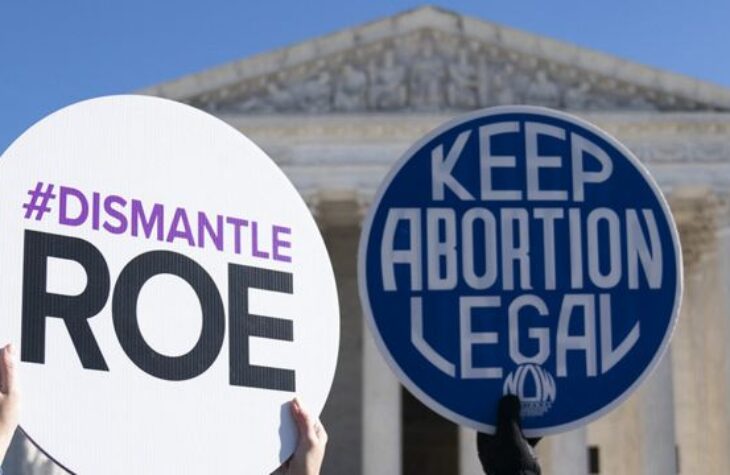
Roe v. Wade Claim & Response
Claim #1: “Most Americans are against overturning Roe v. Wade.”
The vast majority of Americans support limitations on abortion. The radical, up-until-birth position on abortion that Roe legally sanctioned is antithetical to where Americans stand on the issue. By contrast, most – 79% according to the most recent Pew Research Center poll released this month – believe abortion should face significant restrictions. This echoes findings of a Marist poll from earlier this year: the majority of Americans reject Roe’s central holding and support legal limits on abortion.
Public opinion is on the side of life. Overturning Roe will not only turn the question of abortion’s legality back to states, it will also fuel the persuasiveness of the truth about abortion in conversation between families, colleagues, and friends and through actively reclaiming a nation-wide enthusiasm for life.
Overturning Roe represents a twofold promise. First, it will allow a real public debate on abortion to flourish in tandem with the compelling truth that our culture must champion families, encourage adoption, uplift the disabled, and ground itself in the inviolablity of human dignity.
And secondly, for the first time in nearly 50 years, this aim can be achieved in reality, not just in theory: by bringing the law in line with truth and dismantling abortion’s direct and indirect stronghold on every level in our nation’s government, communities, and ethos.
Claim #2: “Roe v. Wade is just about keeping abortion safe, legal and rare.”
Bill Clinton’s ridiculous “safe, legal and rare” mantra mainstreamed abortion under what was all but a mask for what the Left truly believes about Roe v. Wade. Liberals view abortion as the rule, not the exception. They want to impose the most radical abortion policies possible on the entire country, and Roe is the vehicle through which they have achieved that.
Proof is in the own words of liberals and their legislative attempts to enshrine on-demand abortion in America, through all nine months of pregnancy, and in some cases infanticide.
For example,
- In Congress, S. 4132, the Women’s Health Protection Act of 2022, proposed to require every state to legalize abortion without any limitations, restrictions, or requirements. The Women’s Health Protection Act failed to pass in the Senate this March in a 49-51 vote on partisan lines with the exception of Democrat Senator Manchin.
- Colorado passed HB 22-1279, the Reproductive Health Equality Act, which legalizes the state to provide abortions through all nine months of pregnancy as state law.
- New York passed S240, their own version of the Reproductive Health Equality Act, legalizing “a woman’s fundamental right to safe, legal abortion” without restrictions as state law.
- California Democrats’ stated goal to make California an abortion “sanctuary,” in the words of Governor Newsom. This includes their recent push to amend a bill that gets rid of the requirement to investigate infant deaths “related to or following known or suspected self-induced or criminal abortion.” The bill’s wording and vague definitions validate serious concern that California is well on its way to sanction infanticide.
- Former Virginia Governor Ralph Northam’s appalling rubber stamp on third-trimester abortions and infanticide: “If a mother is in labor…the infant would be delivered. The infant would be kept comfortable. The infant would be resuscitated if that’s what the mother and the family desired, and then a discussion would ensue between the physicians & mother.”
- The overabundance of pro-abortion TikToks that have come out since the leaked Dobbs decision reflect as much; one example being a protestor screaming: “Ladies, if you get pregnant, run on down to the abortion clinic, and have that little b*stard sucked right out.”
The almost sacramental dedication to killing children without qualifications is endemic on the left; it is clear their devotion to unmitigated access and celebration of abortion has nothing to do with “safe, legal and rare” but an insatiable quest for self-fulfillment, amounting in bloodlust for innocent children.
Claim #3: “Overturning Roe would ban the Pill and IUDs.”
Overturning Roe v. Wade would not outlaw contraceptives. It would allow states to ban abortions, whether conducted by surgical procedures or through the use of abortifacients.
Claim #4: “There’s no such thing as late-term abortions. They are a myth that the pro-life side uses as a scare tactic.”
Recent data from the CDC and Guttmacher Institute, the pro-abortion research arm of Planned Parenthood, report that late-term abortions (which they define as after 21 weeks gestation) amount to at least 1.2–1.3% of all abortions every year. In raw numbers, Guttmacher estimated that out of 862,320 abortions in 2017, over 10,000 were conducted on late-term babies who could have survived outside of the womb. Not only is this a statistically significant number, it is an under-estimation. The CDC admits that any abortion reporting it conducts is incomplete because states are not required to report their abortion surveillance. In other words, these numbers don’t take into account abortion statistics from states like California, D.C., or Maryland – all well-known abortion hubs who do not report their abortions.
And recent stories, such as the discovery of 5 full-term babies aborted in Washington, D.C. are a visible reminder of the horror and prevalence of late-term abortion, a procedure that is not banned in D.C., which holds the least restrictive abortion laws in the country.
Claim #5: “Fetuses don’t feel pain until late in the pregnancy, between 29-30 weeks.”
Wrong. Abortionists love touting this claim based off of studies published as far back as nearly 20 years ago. Put simply, the statement that fetuses don’t feel pain until late in gestation is based on outdated and wrong science. Both pro-abortion and pro-life scientists now agree that the unborn child’s capacity for pain sits at 12 weeks gestation, if not earlier – based on modern, peer-reviewed science.
The pro-abortion side loves citing a 2010 report co-authored by one of the world’s leading neuroscientists, Dr. Stuart Derbyshire, who was a “leading voice” against fetal pain. But Derbyshire changed his longstanding position on fetal pain in 2020, after he published a peer-reviewed study in BMJ’s Journal of Medical Ethics that completely debunks the claim that fetal pain does not exist until the cortex develops. Instead, Derbyshire concluded that unborn children perceive pain as early as 12 weeks. This evidence continues to outweigh the pro-abortion side’s unscientific, ancient claims.
“Overall, the evidence, and a balanced reading of the evidence, points towards an immediate and unreflective pain experience mediated by the developing function of the nervous system as early as 12 weeks.”
Fetal pain is also visible through ultrasound technology, which shows that unborn children in the womb grimace and squirm away from needle injections – just like a child outside of the womb would while receiving a shot. In addition, anesthesia for surgeries done on babies in the womb (like operations to correct spina-bifida in utero) is used starting at 14 weeks.
Claim #6: “Abortion laws around the rest of the world are much more liberal. Overturning Roe v. Wade will set the United States back.”
Wrong. Admitted even by The Washington Post itself, the U.S. is on record for having the third most extreme abortion laws compared to the rest of the entire world. It rates below only North Korea and China. In fact, U.S. abortion law makes the European Union look like a bastion of conservative values. The U.S. is 1 out of only 7 countries that allows abortions after 20 weeks. The comprehensive study on abortion laws in 198 countries worldwide received the rare Gepetto Checkmark for Truth by WAPO, and corresponds to similar reports done by pro-abortion groups.
Claim #7: “Roe v. Wade decreased abortions. Overturning it will increase the number of illegal abortions.”
This is a misleading claim. Immediately after Roe v. Wade, the number of abortions skyrocketed in the U.S. From 1974 to 1980, abortions increased at an astronomical rate of 52%. The decline in abortion rates after 1980 in the United States is most glaringly due to the immense overall decline in national pregnancy rates, which have decreased steadily since the 1970s regardless of fluctuating abortion rates. Last year, the CDC found that the U.S. birthrate fell another whopping 4% in 2020 alone, reaching an all-time record low since 1979. Pro-abortion groups themselves reiterate that the main cause of the decline in U.S. abortions are “fewer pregnancies” in the first place, not the other way around.
The decline in abortion rates can also be tied to diligent legislative and cultural gains made by the pro-life movement, underlining the fact that “changing hearts and minds” about abortion must be taken in tandem with changing the law. Even the Guttmacher Institute, Planned Parenthood’s research arm, acknowledges this, citing that public funding restrictions, parental involvement or informed consent laws,
Texas is a great case study for how law furthers cultural change. The abortion rate fell over 60% in the first full month of the Heartbeat Bill being enacted, and it’s not enough to say that women simply sought abortions in other states. Numerous studies have found that legal restrictions both decreased abortions and increased the birthrate among abortion-minded populations.
Claim #8: “Overturning Roe will refuse treatment for women who have miscarriages. This will even make treatment for ectopic pregnancies illegal.”
This is an intentional distraction by the pro-abortion lobby and completely false. There is no law on the books that forbids treatment for miscarriages or ectopic pregnancies, and pro-lifers universally reject such an idea. The treatment for a miscarriage or ectopic pregnancy is not an abortion, neither medically nor philosophically.
Claim #9: “Pro-lifers want to throw abortion-seeking women into jail.”
The pro-life movement has labored for decades to ensure that the law no longer lies to women that choosing abortion is anything other than killing an unborn child and to punish those who have perpetuated such brutality among the least of us.



